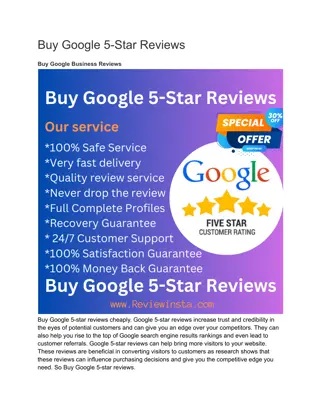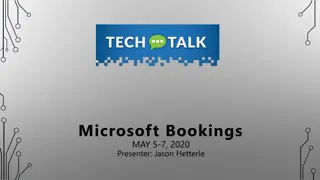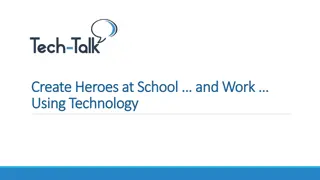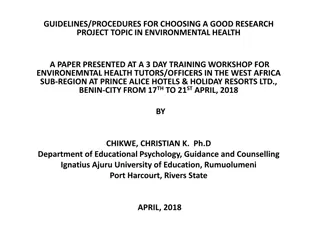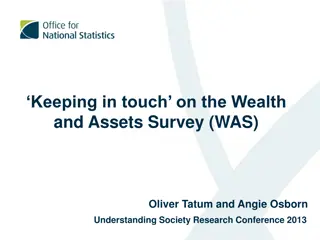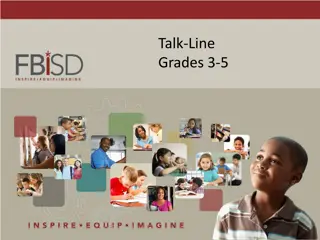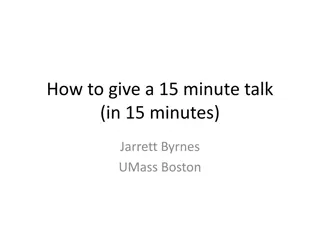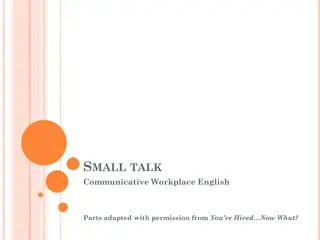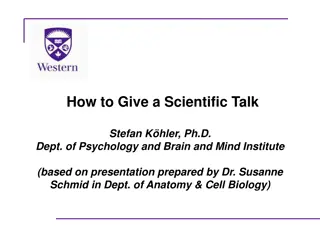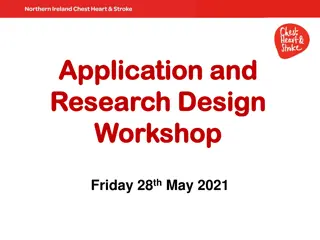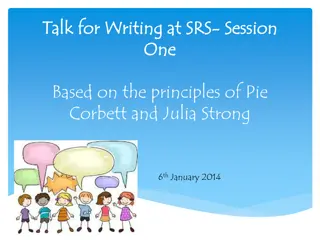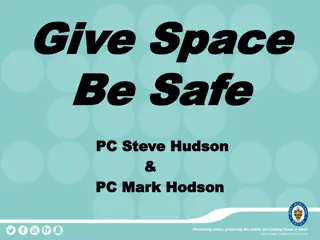How to give a great research talk
In this insightful presentation by Simon Peyton Jones from Microsoft Research, learn valuable tips on giving a successful research talk. Discover the true purpose of your talk, understand your audience, and effectively engage them. Find out what to include in your talk to captivate and inspire your listeners.
Download Presentation

Please find below an Image/Link to download the presentation.
The content on the website is provided AS IS for your information and personal use only. It may not be sold, licensed, or shared on other websites without obtaining consent from the author.If you encounter any issues during the download, it is possible that the publisher has removed the file from their server.
You are allowed to download the files provided on this website for personal or commercial use, subject to the condition that they are used lawfully. All files are the property of their respective owners.
The content on the website is provided AS IS for your information and personal use only. It may not be sold, licensed, or shared on other websites without obtaining consent from the author.
E N D
Presentation Transcript
How to give a great research talk Simon Peyton Jones Microsoft Research, Cambridge 1993 paper joint with John Hughes (Chalmers), John Launchbury (Galois)
Giving a good talk This presentation is about how to give a good research talk What your talk is for What to put in it (and what not to) How to present it
Why you should listen to this talk Because many research talks are poor... ...and quite simple things can make your talks much better Because everyone benefits from good talks Your audience benefits from your hard-won insights You benefit from their informed feedback Because a research talk gives you access to the world s most priceless commodity: the time and attention of other people. Don t waste it!
The purpose of your talk The purpose of your talk is not: To impress your audience with your brainpower To tell them everything you know about your topic To present all the technical details
The purpose of your talk The purpose of your talk is: To give your audience an intuitive feel for your idea To make them foam at the mouth with eagerness to read your paper To engage, excite, provoke them To make them glad they came
Your audience The audience you would like Have read all your earlier papers Thoroughly understand all the relevant theory of cartesian closed endomorphic bifunctors Are all agog to hear about the latest developments in your work Are fresh, alert, and ready for action
Your actual audience The audience you get Have never heard of you Have heard of bifunctors, but wish they hadn t Have just had lunch and are ready for a doze Your mission is to WAKE THEM UP And make them glad they did
What to put in 1. 2. Your key idea (80%) 3. There is no 3 Motivation (20%)
Motivation You have 2 minutes to engage your audience before they start to doze They are thinking... Why should I tune into this talk? What is the problem? Why is it an interesting problem? Does this talk describe a worthwhile advance?
Motivation You have 2 mins to answer these questions. Don t waste those 2 mins. Example: Java class files are large (brief figures), and get sent over the network. Can we use language- aware compression to shrink them? Yes, and I m going to show you how we can do 50% better than the best generic zipping technology Example: Synchronisation errors in concurrent programs are a nightmare to find. I m going to show you a type system that finds many such errors at compile time.
Your key idea If the audience remembers only one thing from your talk, what should it be? You must identify a key idea. What I did this summer is No Good. Be specific. Don t leave your audience to figure it out for themselves. Be absolutely specific. Say If you remember nothing else, remember this. Organise your talk around this specific goal. Ruthlessly prune material that is irrelevant to this goal.
Narrow, deep beats wide, shallow No Yes Avoid shallow overviews at all costs Cut to the chase: the technical meat It s ok to cover only part of your paper
Your main weapon Examples are your main weapon To motivate the work To convey the basic intuition To illustrate The Idea in action To show extreme cases To highlight shortcomings When time is short, omit the general case, not the example
Exceptions in Haskell? Exceptions are to do with control flow There is no control flow in a lazy functional program Solution 1: use data values to carry exceptions data Maybe a = Nothing | Just a lookup :: Name -> Dictionary -> Maybe Address Often this is Just The Right Thing [Spivey 1990, Wadler list of successes ]
Outline of my talk Background The FLUGOL system Shortcomings of FLUGOL Overview of synthetic epimorphisms -reducible decidability of the pseudo- curried fragment under the Snezkovwski invariant in FLUGOL Benchmark results Related work Conclusions and further work
No outline! Outline of my talk : conveys near zero information at the start of your talk Worse, since your audience only gives you 2 minutes before dozing, you ve just lost them But maybe put up an outline for orientation after your motivation and signposts at pause points during the talk
Related work [PMW83] [SPZ88] [PN93] The seminal paper First use of epimorphisms Application of epimorphisms to wibblification Lacks full abstraction Only runs on Sparc, no integration with GUI [BXX98] [XXB99]
Do not present related work But You absolutely must know the related work; respond readily to questions Acknowledge co-authors (title slide), and pre-cursors (as you go along) Praise the opposition X s very interesting work does Y; I have extended it to do Z
Omit technical details Even though every line is drenched in your blood and sweat, dense clouds of notation will send your audience to sleep Present specific aspects only; refer to the paper for the details By all means have backup slides to use in response to questions
How to present your talk Your most potent weapon, by far, is your enthusiasm
Enthusiasm If you do not seem excited by your idea, why should the audience be? It wakes em up Enthusiasm makes people dramatically more receptive It gets you loosened up, breathing, moving around
Write your slides the night before ( or at least, polish it then) Your talk absolutely must be fresh in your mind Ideas will occur to you during the conference, as you obsess on your talk during other people s presentations
Do not apologise I didn t have time to prepare this talk properly My computer broke down, so I don t have the results I expected I don t have time to tell you about this I don t feel qualified to address this audience
The jelly effect If you are anything like me, you will experience apparently-severe pre-talk symptoms Inability to breathe Inability to stand up (legs give way) Inability to operate brain
What to do about it Deep breathing during previous talk Script your first few sentences precisely (=> no brain required) Move around a lot, use large gestures, wave your arms, stand on chairs Go to the loo first You are not a wimp. Everyone feels this way.
Being seen, being heard Face the audience, not the screen Know your material Put your laptop in front of you, screen towards you Don t point much, but when you do, point at the screen, not at your laptop Speak to someone at the back of the room, even if you have a microphone on Make eye contact; identify a nodder, and speak to him or her (better still, more than one) Watch audience for questions
Questions Questions are not a problem Questions are a golden golden golden opportunity to connect with your audience Specifically encourage questions during your talk: pause briefly now and then, ask for questions Be prepared to truncate your talk if you run out of time. Better to connect, and not to present all your material
Presenting your slides Use a wireless presenter gizmo Test that your laptop works with the projector, in advance Laptops break: leave a backup copy on the web; bring a backup copy on a disk or USB key
Presenting your slides A very annoying technique is to reveal your points one by one by one, unless there is a punch line
Presenting your slides Use animation effects very very very very very very very sparingly
Finishing Absolutely without fail, finish on time Audiences get restive and essentially stop listening when your time is up. Continuing is very counter productive Simply truncate and conclude Do not say would you like me to go on? (it s hard to say no thanks )
Conclusion: there is hope The general standard is often low. You don t have to be outstanding to stand out You will attend 50x as many talks as you give. Watch other people s talks intelligently, and pick up ideas for what to do and what to avoid. http://research.microsoft.com/~simonpj
What your talk is for Your paper = The beef Your talk = The beef advertisment Do not confuse the two
Do it! Do it! Do it! Good papers and talks are a fundamental part of research excellence Invest time Learn skills Practice Write a paper, and give a talk, about any idea, no matter how weedy and insignificant it may seem to you
Research is communication The greatest ideas are worthless if you keep them to yourself Your papers and talks Crystalise your ideas Communicate them to others Get feedback Build relationships (And garner research brownie points)

 undefined
undefined


